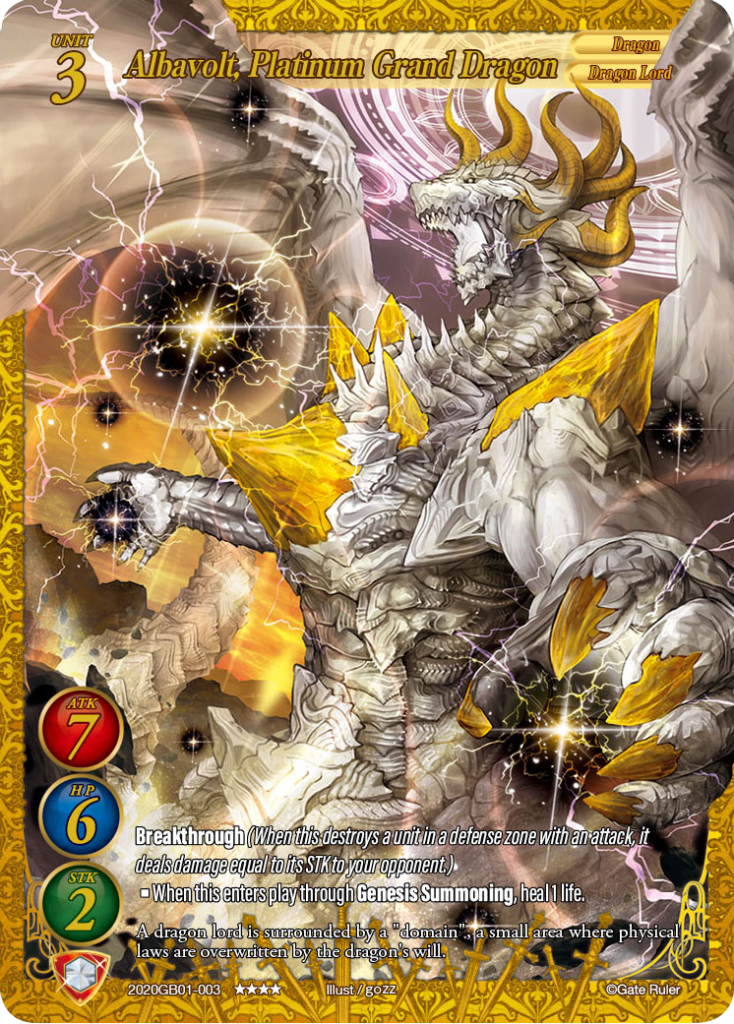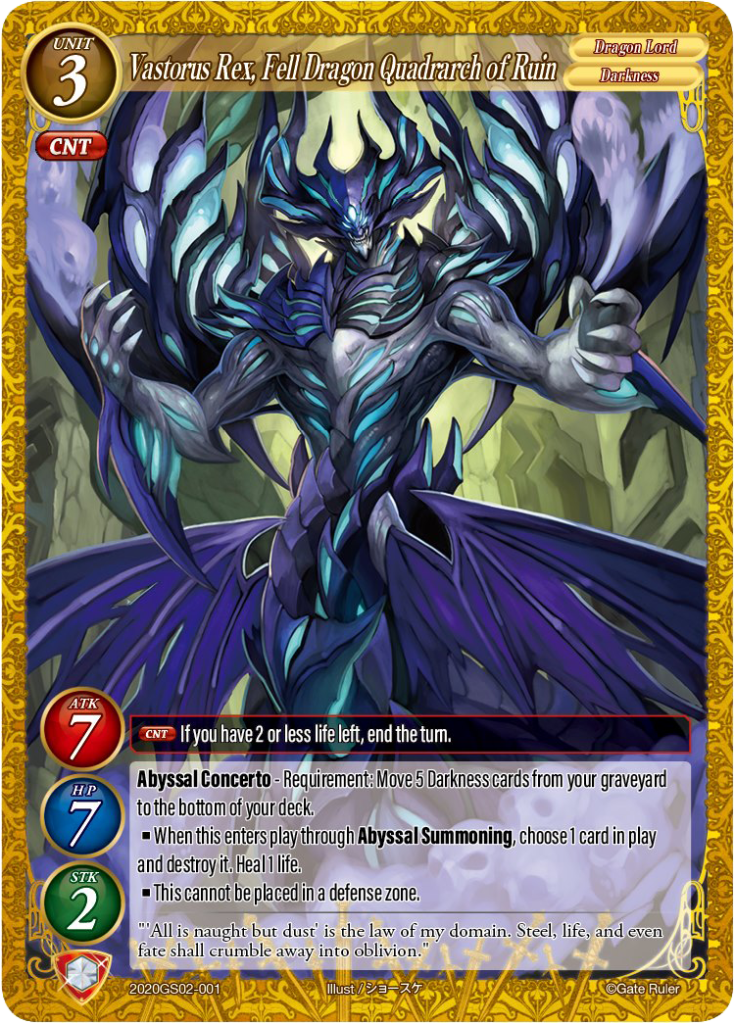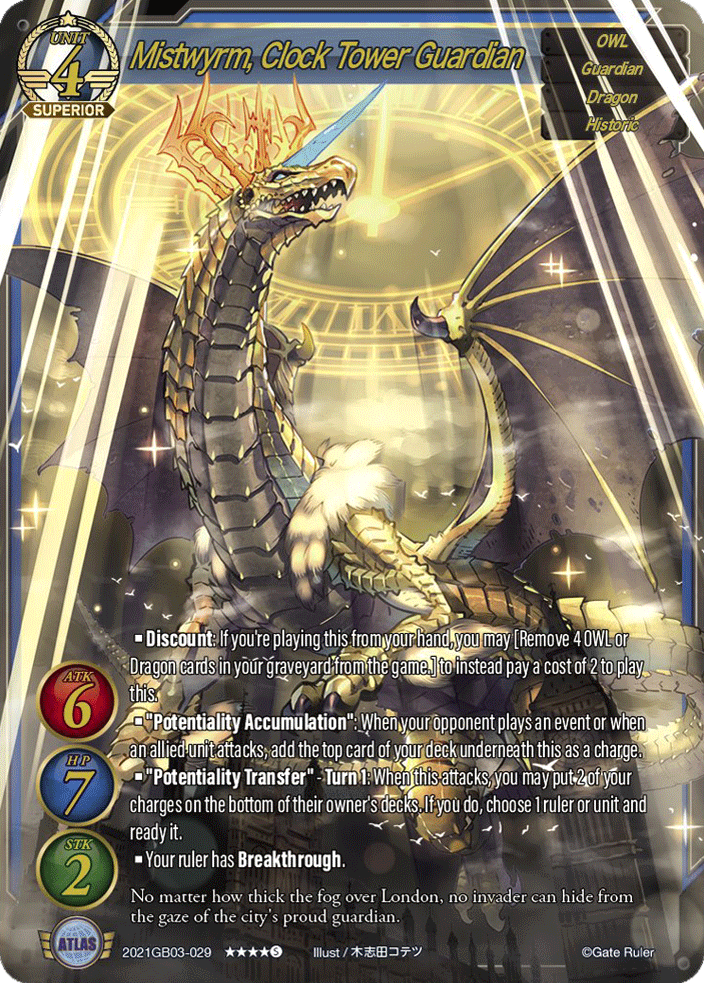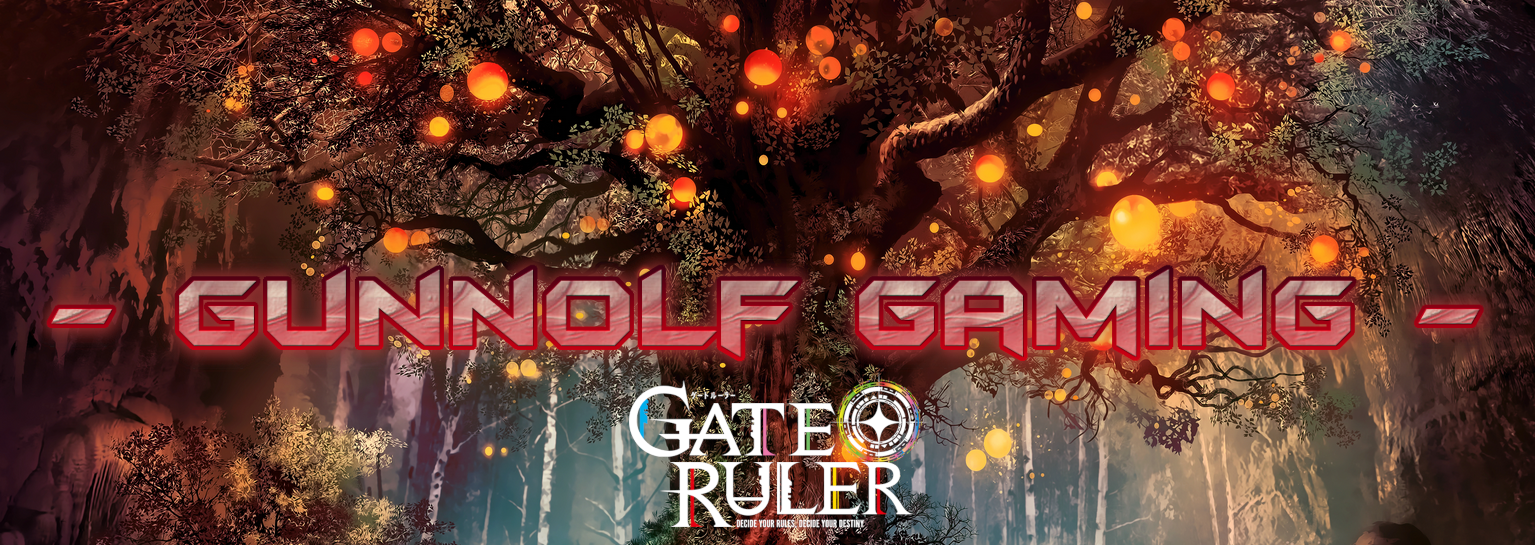
After a lengthy hiatus, I would like to officially say welcome back, everybody. Today we will be dealing with a highly requested topic, prevalent in any and all TCGs. Namely, and as the title suggests, we will be creating a tier list showcasing the most well-performing Archetypes in Gate Ruler from a competitive standpoint, during set 4.
However, in order to ensure that we are accurate in our classifications, we have to once again take into consideration a wide number of factors, including but not limited to Rulers, Tech Cards and Color Combinations.
Lastly, the meta tier list provided will predominantly be based on tournament results, deck showcases, and advertised performances from locals, the GateRuler World Team Circuit as well as general reported results. As such, it will inherently provide a strong snapshot of the wider metagame but always remember that in the absence of side-boards and in the presence of stringent deckbuilding requirements, the clarity of division between tiers will be somewhat obfuscated.
Tier List Parameters
Before proceeding any further, and in a similar fashion to our previous meta ranking for set 3, it is first necessary to define each individual tier, so we have a steady frame of reference both now and for future sets.
Tier 0: Decks that are significantly overpowered to the point that they warp the existing meta around them. They tend to have few bad match-ups, if any, are able to bypass most counters, and are quite likely to take the top spot in any given tournament setting.
Tier 1: Decks are quite strong with effects, units, and mechanics that are a chore to deal with efficiently. Capable of generating value consistently, they inherently have few bad match-ups and are able to reasonably recover from effects specifically included in decks to counter them.
Tier 2: Decks are definitely strong meta contenders but tend to suffer from a variety of fatal flaws that, in turn, may downplay their effectiveness in the overall metagame without necessarily invalidating an otherwise strong presence. Such flaws include but are not limited to ‘slow setup‘, ‘partial consistency‘, ‘greater weakness to tech cards‘, and ‘lack of a balanced offence/defence’.
Tier 3: Decks can still compete in the meta but tend to suffer from a similar set of flaws to those found in the above tier list, albeit at a significantly greater level. This means that victories will have substantial reliance on the ‘luck factor’, which although present in any deck, is genuinely more relevant in achieving victory with these types of lists.
Tier 4: Decks that, although potentially thematically coherent, struggle to put together a consistently strong winning strategy. Even with the ‘luck factor’ in play, it can potentially still not be enough to effectively close out a victory in their favor.
Tier 1
In this instance, the strongest decks at the present time of writing this article most likely are:
- K-11 Dragon Genesis Summoning: Maintaining its top spot from the previous set, Genesis makes its triumphant return as the game’s favourite son, maintaining an especially high winrate during the Gate Ruler World Team Circuit. One has to wonder though if its dominance will persist into the next set considering that at the present time it is being hard carried by cards like Skystrike Arrow and Albavolt Platinum Grand Dragon.
- V. 22 Reginleif Rumble: A freshly released archetype, the Reginleif attribute bears a striking resemblance to Genesis albeit packed with significantly more removal and versatility in terms of how the deck can be built. Neck and neck for the top spot, the deck does suffer from some key weaknesses, the primary one being its inability to heal any damage once taken.
- V. 22 Shadowshades: Another freshly released archetype, Exvaders came back with a vengeance with this most recent tribe. With the ability to hit for an absurd amount of damage on top of having access to two different builds, with ATLAS and VOLNAR, the deck can be tailored to suit multiple competitive environments.



Make no mistake though. These archetypes can still be countered and can still lose games to ‘lower-tiered’ decks, as far down as tier 3, on a semi-regular basis. They are mostly given this top spot due to the consistency of their win condition, their ability to counteract other meta contenders, the strength of their units/events/fields, and their ability to bounce back from devastating CNTs.
Overall it could be argued that anything utilising the genesis summoning mechanic could in theory be tier 1. However, utilising the mechanic is not enough. One also needs to assess the strength of the summoned units, as will be illustrated below.
Tier 2
At the present time, the majority of powerful decks seem to fall within this tier. The reasoning for this flows back to our definition in the ‘Tier List Parameters’ section of this article.



- O.15 Abyssal Darkness: Teetering on the edge between tier 1 and tier 2, the archetype now packs a significant punch considering that the consistency of which it can end turns has been boosted by an obscene extent. With the possibility of being labeled as rogue, the strategy seems to revolve almost exclusively around playing a total of 8 Rex, much like its set 3 counterpart, except with renewed vigor.
- 20. T Supernatural Trickster: Putting the trick in trickster, this particular archetype utilises the ruler’s ability to its fullest potential seeking to dismantle an opponent’s board while potentially forcing them to discard important resources. Sadly, while it is quite strong in a similar fashion to Alice, it does suffer from consistency issues in so far as getting Huli of the Spider Lily on the field reliably. Provided with new tools, the archetype continues to shine in this format. However, it is perhaps the only deck in the entire game that loses a decent chunk of its matches to ‘deck out’ since it is so proficient at turboing through its cards.
- W. 23 Alice Control: Despite a wealth of support that solved a lot of its previous issues, another one of Gate Ruler’s flagship archetypes kept its tier 2 slot after not being able to break through into the upper echelon. Despite being home to the Wizard ruler, the cost of the new Wonderverse Alice is still quite steep thus preventing the deck from being able to tempo out effectively. All this, however, is mostly like set to change as Alice is going to receive even more support with her own Trial Deck in the next set.



- V. 22 Superheroes: Operating as a tempo control deck, the archetype initially had a very poor showing in the competitive scene. Yet, as more local tournaments were held, eventually it got refined to a point where the deck could not only hold its own but also reasonably compete with a variety of other archetypes.
- W. 23 Lucy Aras: Oh how the mighty have fallen. Well not fallen but rather have descended to a lower altitude. While still a very strong deck, with a decent showing in the Gate Ruler World Team Circuit Finals, the fact that the ‘competitive health threshold’ for units was increased to 6 health meant that the deck would not be quite as oppressive as it was in set 3 without the added power of the G&G field effect.
- O.15 / 20. T Zoo Brigade Rampaging Owl: Though somewhat forgotten, the deck (no matter the ruler) is still very capable of roaring to victory dealing well above 10 damage in a single turn with its main unit having Breakthrough in addition to in-built protection with Charge Shield. Much like Abyssal Darkness, the deck is also teetering on Rogue status, maintaining its standing from the last set albeit with a small dip.
Tier 3
While not exclusively limited to Drive-Rulers, they do make up quite a significant part of this tier despite the real boost they received in set 4. With still limited drives, strict level limits, and a playstyle that can invariably be countered with some careful thinking, the over-reliance on top-decking can be quite hit or miss, especially if you do not drive into powerful cards like Sakuya-hime Kami of Blossoms or Darumageddon for example.
- 2. B Berserker: Unfortunately, even with the copious amount of multi-drive cards that this Ruler received in Set 4, what seemed very powerful on paper sadly has not translated well into practice. Still capable of high rolling, the deck does occasionally completely sweep tournaments and thusly is not something that should be completely discounted.
- O. 15 Military Ikazuchi: The Ikazuchi attribute received an incredible amount of support this set, in a similar fashion to that of Alice. However, much akin to the aforementioned deck’s set 3 iteration, the archetype suffers from ‘lack of consistency’ issues caused by a lackluster amount of draw power and ability to search out its key unit; Fuse-Ikazuchi. With a new trial deck on the horizon as well as Set 4 this deck is only bound to get better and perhaps break through into one of the higher competitive tiers.
- D. 4 Future Folk: Although it started out strong, the deck’s powerhouse performance fizzled out once again due to the nature of drive decks. However, it is most certainly an attribute to watch since most of its inconsistencies stem from the fact that not enough relevant cards have been printed yet.



- EX – 1 Janken Junkie Burn: A new addition to the burn archetype, the deck actually performs reasonably well as a whole, especially considering the limited amount of resources it has access to. Realistically, its biggest flaw is the ruler itself as the absurdly strict level limit leaves very little room for powerful cards unless one is willing to overload on negative level events and their ensuing detrimental effects.
- T. 22 Burn: Sadly, even with the new support the deck has failed to evolve by a significant extent. Though the win condition is steadfast and can assuredly counter one of the top decks, any archetype that has the ability to heal can shut down this strategy quite effectively.
- O. 15 Sharks: Surprisingly, this deck does rather well. There are a variety of builds so it is difficult to nail down which is the most optimum strategy. Furthermore, there are some consistency issues but what was once discounted as a meme is actually quite viable overall.
- T. 22 / O. 15 Crimenauts: What is there to say about this attribute. At the very least it is viable, even beyond these two listed Rulers as well. The problem once again boils down to a matter of consistency. The deck has so many useful effects and can be tailored to almost any situation but they tend to not come up when required.
This particular grouping has the prospect of being highly contentious among the community since there are instances where these decks, and in particular the ‘drive related’ ones, have steamrolled opponents by achieving drive after drive after drive, thus resulting in an overwhelming amount of attacks. However, such effects are not always done consistently and even though they are able to achieve way more than what they could during set 3, ‘Hand Decks’ have not been sitting idly by and have progressed to greater heights as well.
Tier 4
Barely any decks can be said to fall into this category. In essence, the archetype has to either not have enough support or the deck itself has to be quite poorly constructed. Sadly, with all my experimentation to this date, it seems like the only archetype that would squarely fall into this category would be Dai-Jinki, the Three Regalions Combined. The card requires far too much investment for a mediocre pay-off to such an extent, that it would simply be better to play a generic ‘robotic attributed drive deck’ completely free of the unit and any of its combo pieces. Even luck in this instance would typically not be enough to offer salvation.
Final Thoughts
While it was once again a joy to finally engage in a write-up like this, after a fair bit of data analysis, it is still quite difficult to make such a submission with an extreme amount of certainty. The amount of information we have at our disposal is still fairly limited, all things considered, and as such, there is still room for further clarity to be provided on the matter. Taking this into account, as time passes I will be adding to this particular article, particularly providing links to submitted archetypes as their respective Deck Profiles are published.
With major variances in builds, pocket/local metas, and substantially different construction rules for each Ruler, not to mention different builds under the same ruler, there is certainly enough room for multiple archetypes to claim the throne of ‘Top Deck’. Yet, if nothing else this submission should at least give you some insight into what a top deck needs to possess in order to transition from one tier to the next. For some, it is possible to do this just by re-arranging their included tools, while others face an uphill struggle simply by virtue of the fact that they do not have access to those options yet.
Despite my departure from my usual full-on deck analysis, I do sincerely hope you enjoyed this write-up. If you are curious to see more, do not forget to give me a follow on Twitter and if you would like to be a part of the creative process that goes into doing these write-ups, you can also check out my Patreon.

